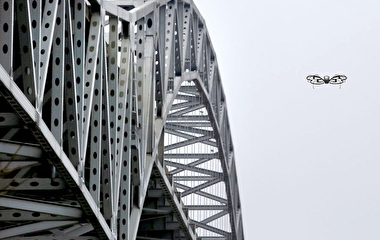Could the same infrared technology that’s used by security firms to detect trespassers be used to spot carpool lane violators? Not yet, says new research sponsored by MnDOT, which shows that to consistently detect passengers through windshield glass, the system would require a laser that might harm people’s eyes.
"Some vendors have proposed significant investments in sensing technology for HOV/HOT lane enforcement,” says Nikos Papanikolopoulos, a professor in the Department of Computer Science and Engineering. “This research demonstrated that it’s not safe, so the tests saved a lot of money and protected the well-being of drivers.”
Obtaining technology to assist officers with enforcement is a goal for MnDOT and many other agencies that operate high-occupancy vehicle or toll lanes, and several manufacturers are working to develop enforcement cameras. But this has proven to be a difficult task. Window tinting and glare from sunlight can thwart common sensing technologies like video cameras and microwave radar (commonly used in speed limit enforcement). Previous research using near-infrared sensors has shown promise, but none has produced completely successful results. This study tested a Honeywell sensor that was originally used to automatically detect intrusions at high-security entrance gates.
Indoor tests demonstrated that when aided by supplementary illuminating lasers, the sensor was capable of detecting humans through commonly manufactured vehicle window glass. However, to achieve successful results, these lasers must operate at high power in a narrow range of wavelengths. Despite operating outside the visible spectrum, they can damage human eyes when operating at the necessary power level to enable effective detection through glass. While investigators conducted this project’s indoor tests with adequate protection, there is currently no way to ensure safe usage of the lasers in real-world applications.
“Development is still continuing in the industry, so we will cautiously evaluate sensing technologies as they come along,” says Brian Kary, MnDOT freeway operations engineer and the project’s technical liaison. “This research gave us a solid base of knowledge about what we’ll be looking for and what we need to avoid.”




